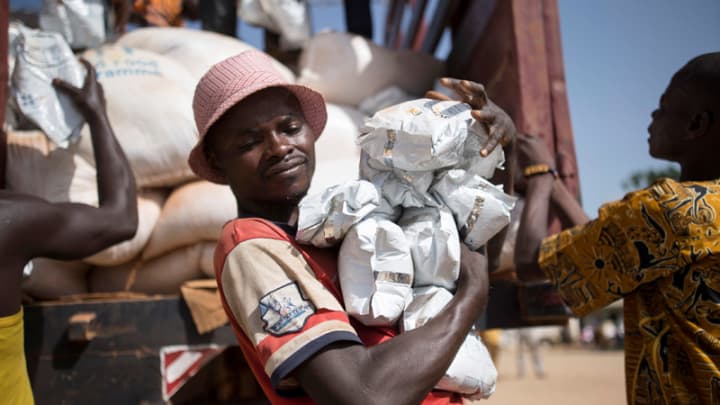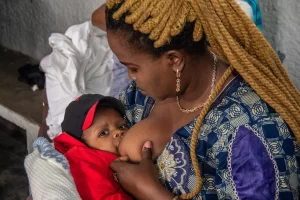CLAIM: 26% of 15,1 million is 3,926,000 not 2,715,717 as you portray. Your figure is wrong by over 1,2 million. How can the Govt make such a grave mistake on such a life and death policy issue?
SOURCE: Fadzayi Mahere, on X (formerly, Twitter)
VERDICT: Partly true but based on incorrect data. In short 26% of the country’s population based on the 2022 census is 3,946,529, to be exact. However, Nick Mangwana and Dr Jenfan Muswere erroneously said the statistics were for the country’s population instead of specifying that it was only for the rural population.
Fadzayi Mahere responded to a post by Information ministry permanent secretary, Nick Mangwana’s post on the number of food insecure Zimbabweans with, ‘Good morning @nickmangwana, Zimbabwe has a population of 15,1 million according to the 2022 census data published by the Govt. 26% of 15,1 million is 3,926,000 not 2,715,717 as you portray. Your figure is wrong by over 1,2 million. How can the Govt make such a grave mistake on such a life and death policy issue? Now if the Govt can’t do the basic math on how many people are food insecure, how can we trust them to ensure the whole nation is fed? Imagine 1,2 million people starving because of the Govt’s sloppy arithmetic? Such incompetence borders on the criminal. We need new leaders.’
Mangwana had posted that, ‘“26% of the country’s population is food insecure. This translates to 2,715,717 people. This population requires 100 482 metric tonnes of grain during the January to March 2024 period” #PostCabinetBriefing”’.
The Herald also ran a story with the same claim after the post-cabinet briefing of 5 March 2024 which was addressed by the Minister of Information, Publicity and Broadcasting Services, Dr Jenfan Muswere.
Dr Muswere in his post-cabinet briefing address said, ‘The Minister of Public Service, Labour and Social Welfare, Honourable July Moyo updated Cabinet on steps being taken to ensure that all food insecure people are being assisted timeously. The nation is informed that the 2023 Zimbabwe Livelihoods Assessment Committee projects that 26% of the 2 715 000 of the country’s population is food insecure during the period January to March 2024 (sic)’.
It is possible that Dr Jenfan Muswere may have made an error whilst making his post-cabinet address hence the erroneous claim made by Nick Mangwana and carried by the Herald.
As mentioned by Dr Muswere, the figures are attributed to the Zimbabwe Vulnerability Assessment Committee (ZIMVAC) 2023 Rural Livelihoods Assessment.
However, the report itself reads, ‘During the peak hunger period (January to March 2024), 26% of the rural population is projected to be food insecure. This translates to 2,715,717 people.’
The vulnerability assessment report was only for the rural areas and not for Zimbabwe as a whole.
Mahere’s assertion that ‘26% of 15,1 million is 3,926,000 not 2,715,717 as you portray’ is a correct response to Mangwana’s post except that Mangwana and Muswere had misquoted the ZIMVAC report.
However, it is still not clear which population data is being used in the ZIMVAC report. The census mentioned by Mahere puts the rural population at 61.4% of the total population, which translates to 9,319,879. 26% of this rural population would be 2,423,168 and not the 2,715,717 mentioned in the ZIMVAC report.

Current statistics of food insecure people available are for people in the rural areas. Therefore, the calculations are 26% of the rural population only and not the entire country. ZIMVAC gives the 26% of the rural population as 2,715,717 instead of the 2,423,168 that it would be if based on the 2022 census rural population.
The urban vulnerability report for 2023 is still in the report writing stage. Ms Perpetual Nyadenga who is the Director of Knowledge Management at the Food and Nutrition Council (FNC) was quoted by the Herald as saying that the Urban vulnerability report had passed the data collection stage and is now at the writing stage, but is still yet to be presented and approved.
Once approved, the statistics of food-insecure people from the two reports will, combined, provide the total number of food-insecure Zimbabweans in 2024.
Conclusion
The claim by Mahere that 26% of 15,1 million is 3,926,000 not 2,715,717 as you portray. Your figure is wrong by over 1,2 million’ has been rated as partly true. Her figures (rounded off) are based on Mangwana and Muswere’s incorrect reading of the ZIMVAC report. The statistics in the report quoted are specifically for the rural population and not the whole country. Had these figures been correctly quoted Mahere would be right in saying the government was off by over 1,2 million people. As it stands, the figure is almost 300,000 people more than when using the 2022 official census figures for the rural population. ‘











